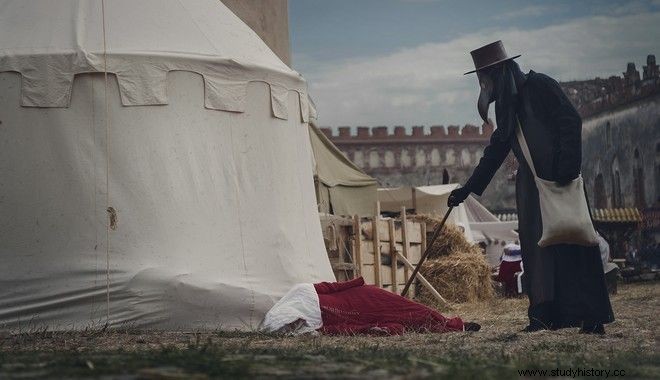The coronavirus pandemic has brought about significant changes in the daily life of the planet. Humanity is experiencing unprecedented situations, counting thousands of dead, while health organizations are on constant vigilance.
Governments around the world are imposing strict measures to delay, as best they can, the spread of an "aggressive" virus. With businesses closing and everything going on a temporary "pause" or a word that has become synonymous with today's normality is "quarantine".
But where does it come from?
Its history goes back to 1348. The word quarantine comes from the Venetian variant of the Italian phrase quaranta giorni (forty days) . Forty were the days of mandatory isolation of ships and crew during the Black Death epidemic.
In 1348 - 1353 one of the most devastating pandemics in world history struck the planet, leaving an estimated 100 to 200 million dead in Europe and Asia, reducing the population from 450 million to 350 - 375 million. The black plague or black death (or even plague!).
The first official records began in October 1347, when Genoese merchant ships from the Black Sea port of Kaffa approached the port of Messina in Sicily, full of the dying and the dead, and thus brought the plague disease to Europe.
Disease, combined with poor sanitation and lack of medical knowledge, was contagious. It had two forms, the inguinal and the pulmonary, while by the beginning of 1348 it had spread from Italy, throughout central France, and by the winter of the same year in southern England and the Low Countries, reducing the population of Europe by a third.
The pandemic was caused by the enterobacterium Yersinia pestis, endemic to populations in central Asia. The most popular theory of its origin is that it came from the steppes of Mongolia, via crusaders returning from the Middle East, although there is also the view that it originated in northern India.
The doctors uniform

Characteristic is the protective uniform of the doctors who treated the plague from the 14th to the 17th century.
The mask was the trademark and was in the shape of a bird. Aromatic herbs such as mint, cloves, myrrh, rose petals and labdanum were placed in the beak. People then believed that disease was airborne and the mask served to protect the doctor.
Their clothing was leather, coated with wax, and not an inch of skin was uncovered. The eyes were protected with glasses, with red lenses and on the head they wore a wide-brimmed hat, to stand out from the rest of the citizens.
They always carried a stick with them to examine the patient without touching him but also to beat him as punishment, as they believed that the plague offended sinners.
